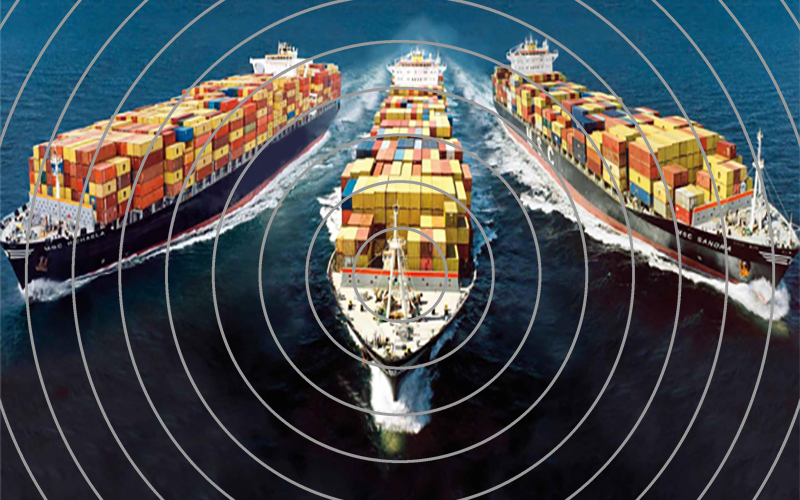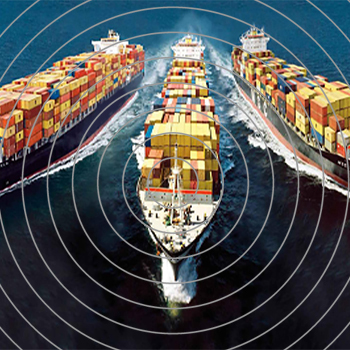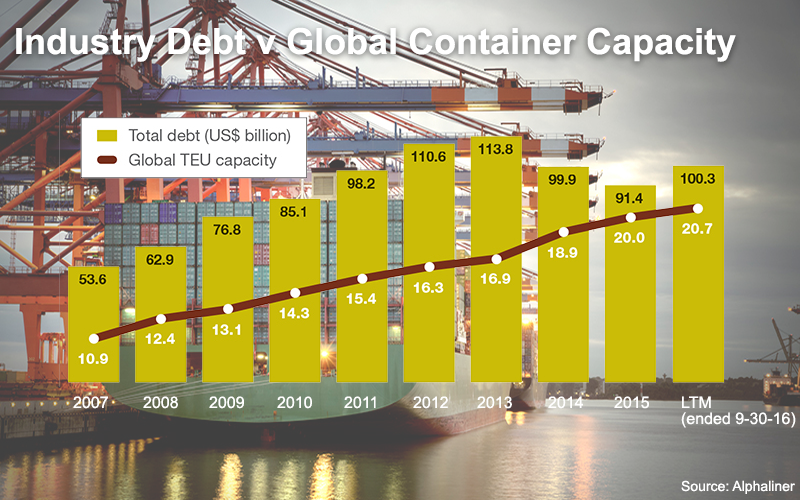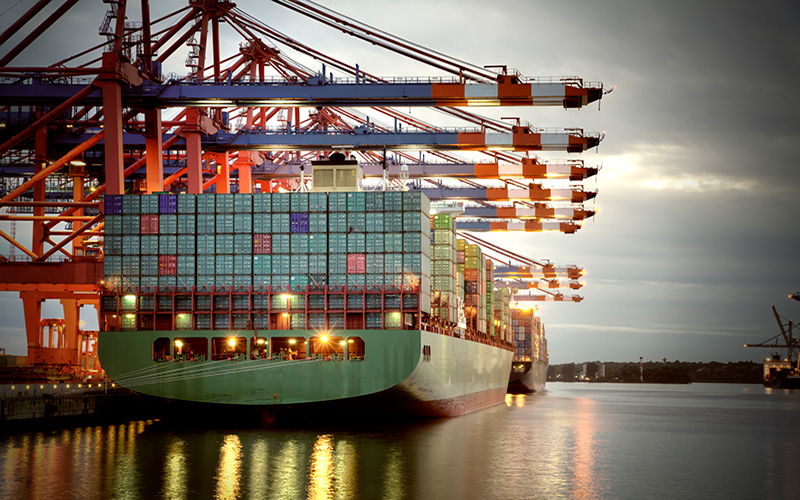Ocean Cargo Carriers Must Optimize Networks

Carriers will have some hard decisions for the remainder of 2017, they must continue to drive down costs through effective post-merger integration and fleet rationalization to bring supply and demand into balance, and continuously optimize networks to make them more efficient.
Owing to the structural overcapacity in the container industry, shippers have essentially had most of the pricing power since the financial crisis, says industry consultant Lars Jensen, CEO and partner of SeaIntelligence Consulting in Denmark.
As a consequence, this has enabled shippers to benefit financially from the cost saving measures brought about by slow steaming, mega-vessels, vessel sharing and “skipped sailings.”
In his new book titled “Liner Shipping 2025,” Jensen observes that vessels ordered in 2014 and 2015 will continue to be delivered over the next two years, meaning high levels of scrapping are likely to continue.
However, Jensen also notes that in 2019 and beyond, a disproportionate share of feeder-sized vessels will be reaching the end of their lifespan, and orders for their replacements are likely to surge.
“The good news is that their relatively small size means the impact on the overall global market will be limited,” adds Jensen.
In the meantime, carriers will still have to make some hard decisions for the remainder of 2017, says Esben Christensen, managing director of the international consultancy AlixPartners.
“They’ve already taken steps to relieve their financial woes, including slashing expenditures,” he says.
“They must continue to drive down costs through effective post-merger integration and fleet rationalization to bring supply and demand into balance.”
Fortunately, spot rates have improved in the wake of last year’s Hanjin bankruptcy, and carriers seem to realize that they must do everything they can to maintain that trend, adds Christensen.
“The carrier community’s ability to drive rate levels higher into future contract negotiations will likely decide whether 2017 will be the turning point the industry desperately needs - or just another bad year in a growing string of losses.”
Ritzau Finans, an analyst with the Paris-based consultancy Alphaliner, maintains that the reduction in idling container ships has been driven by the rollout of new alliance networks, adding that with reduced availability of spot tonnage, the charter market is kept upbeat.
“The container shipping industry is expected to continuously optimize networks and make them more efficient,” he adds.
Analysts for the Baltic and International Maritime Council (BIMCO) in Copenhagen, agree, noting in their “Shipping Market Outlook” that cutting costs where it’s still possible and making the most of the fleet available remains essential to reaping the benefit of the individual alliance members.
Above all, add BIMCO analysts, the implementation of new alliances remains the one thing to watch carefully in 2017. The three ocean shipping alliances - which replaced the previous four - now control 77% of global container ship capacity and as much as 96% of all east-west trades.
“Before getting carried away, we should remember that 57% of all demand, as measured by twenty-foot equivalent unit [TEU] miles, is generated by non-east-west trades that are particularly impacted by the recent years’ cascading of tonnage,” says BIMCO President Anastasios Papagiannopoulos. “Another two-tier market is in the making.”
BIMCO expects the container ship fleet to grow by 2.9% in 2017, under the assumptions that 450,000 TEU will be demolished and 1 million TEU will be delivered. For that to happen, the current demolition interest must cool somewhat and the delivery pace must pick up, analysts conclude.
Russ Romine, Vice President of International Transportation at LEGACY Supply Chain Services in his article “Keeping Ocean Freight Moving This Peak Season,” states that ocean transportation is becoming more of a transaction-driven business, but it should never be done transactionally.
Romine further states that by sacrificing service for the lowest price, a shipper runs the risk of reducing visibility and predictability in their supply chain, increases supply chain risk, limits the ability to come up with proactive solutions to problems that occur during transit, and decreases the efficiency and productivity of their internal operations and customer service teams and, it actually increases their true logistics costs.
“Filling this service gap is something importers and shippers must face the reality of as carriers and low-price forwarders continue to absolve themselves of responsibility for service-based activities”
Read the Article: Keeping Ocean Freight Moving This Peak Season
Article Image: Speed Trans Logistics
Related White Paper & Infographic Resources
International Transportation: Price Matters, But At What Cost?
This paper is a comprehensive guide to international transportation, that will help logistics managers better evaluate and plan their; supply chain strategy, logistics infrastructure, and risk mitigation strategy. Download Now!
Infographic: 2017 Peak Season Ocean Freight Market
Although no one can predict what this year’s peak season will look like, we can use current pricing and capacity indicators, as well as the past to make educated projections. Download Now!
Article Topics
LEGACY Supply Chain Services News & Resources
Outsourcing eCommerce Fulfillment to a 3PL Rapidly Improve the Performance of Your Warehouse Logistics 20 Warehouse & Distribution Center Best Practices for Your Supply Chain Warehouse Contingency Planning Template 7 Last Mile Logistics Delivery & Ecommerce Trends You Don’t Want to Overlook Increase Inventory Visibility across Your Supply Chain and Optimize Omni-Channel Fulfillment Omni-Channel Logistics Leaders: Top 5 Inventory Insights More LEGACY Supply Chain ServicesLatest in Transportation
Talking Supply Chain: Doomsday never arrives for Baltimore bridge collapse impacts Amazon Logistics’ Growth Shakes Up Shipping Industry in 2023 Nissan Channels Tesla With Its Latest Manufacturing Process Why are Diesel Prices Climbing Back Over $4 a Gallon? Luxury Car Brands in Limbo After Chinese Company Violates Labor Laws The Three Biggest Challenges Facing Shippers and Carriers in 2024 Supply Chain Stability Index: “Tremendous Improvement” in 2023 More TransportationAbout the Author


















